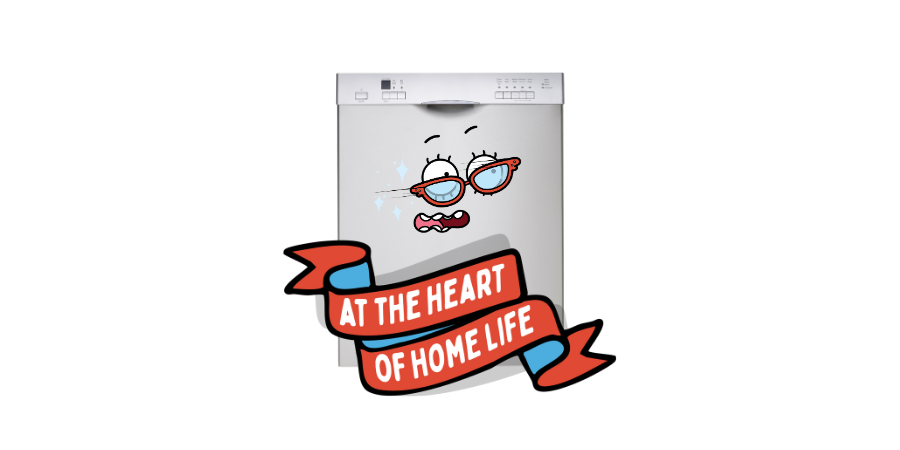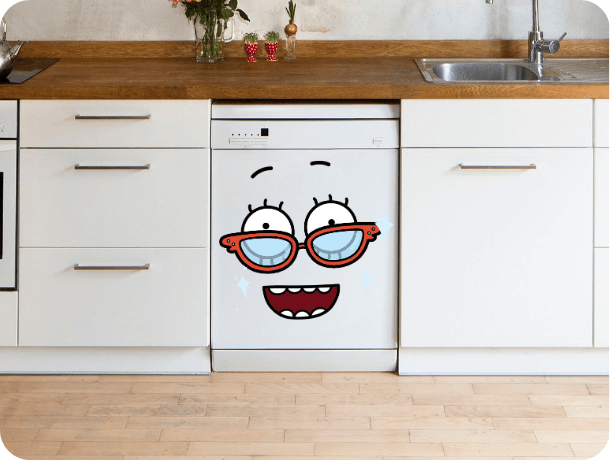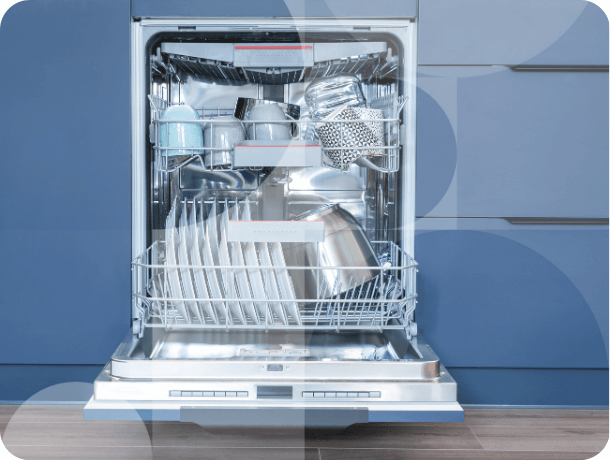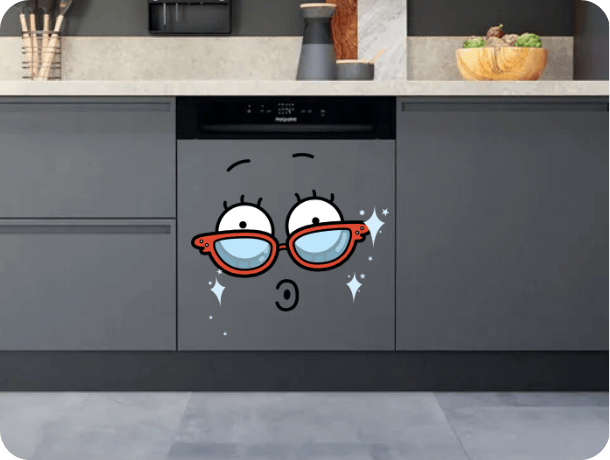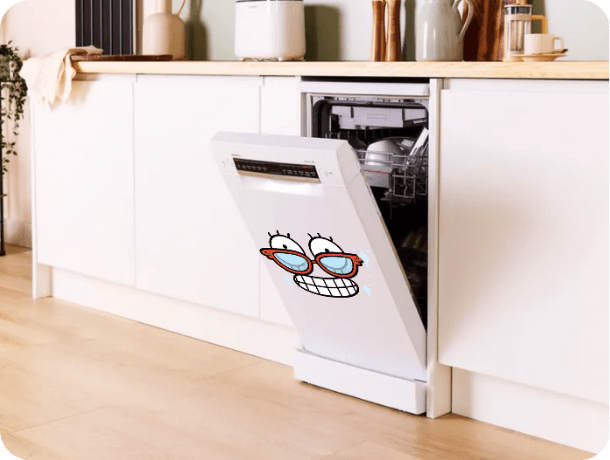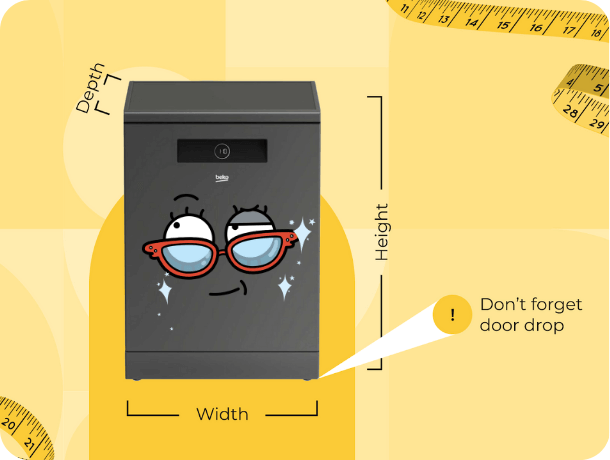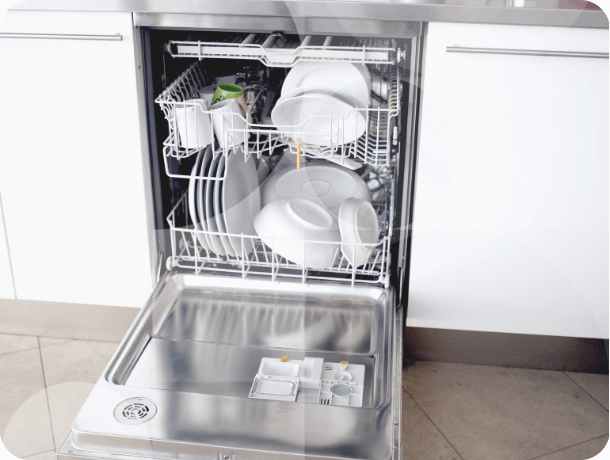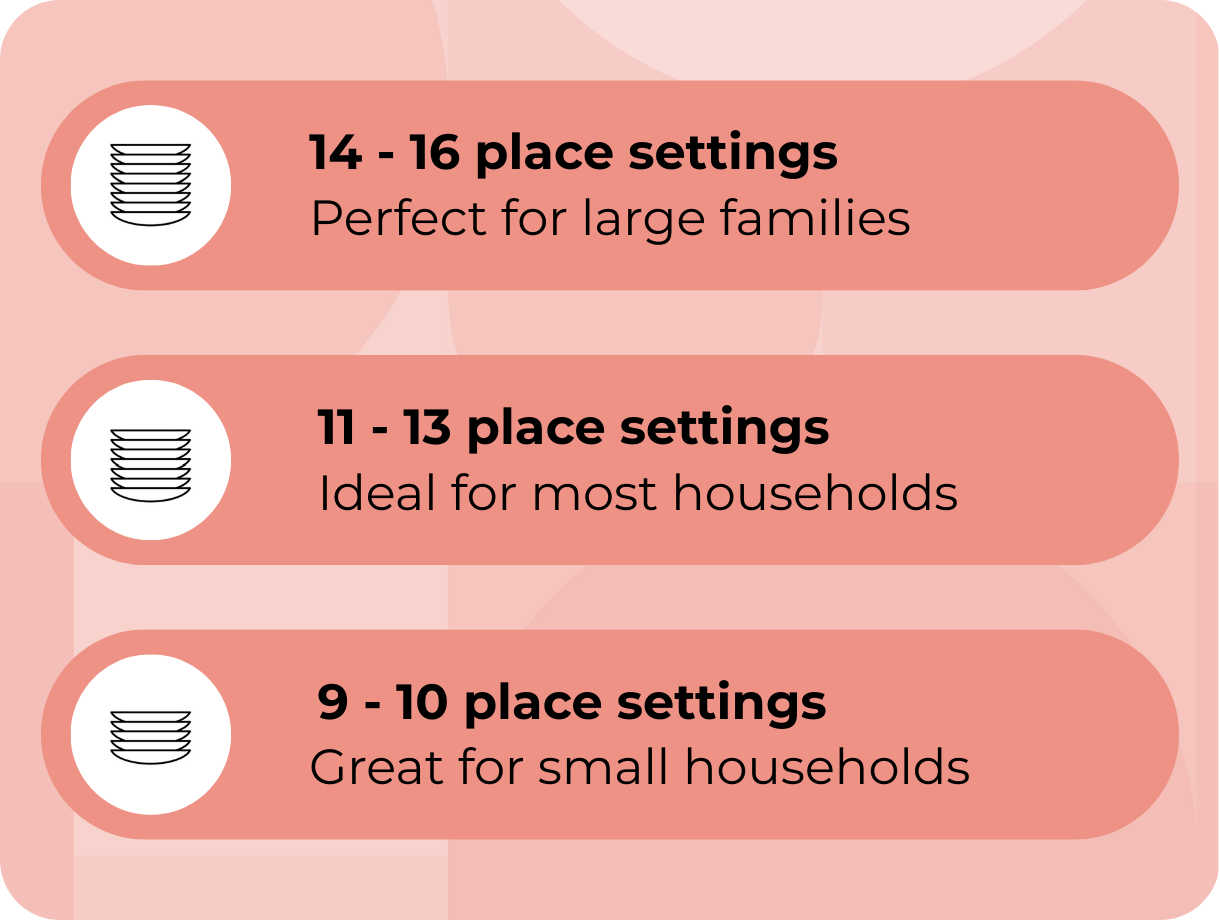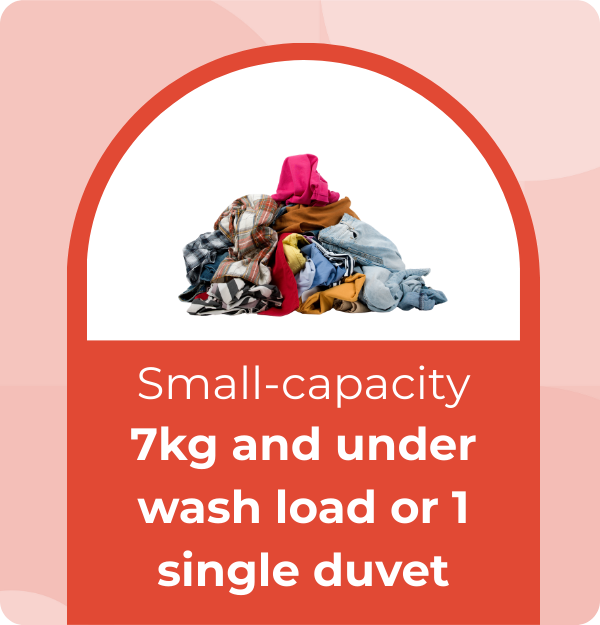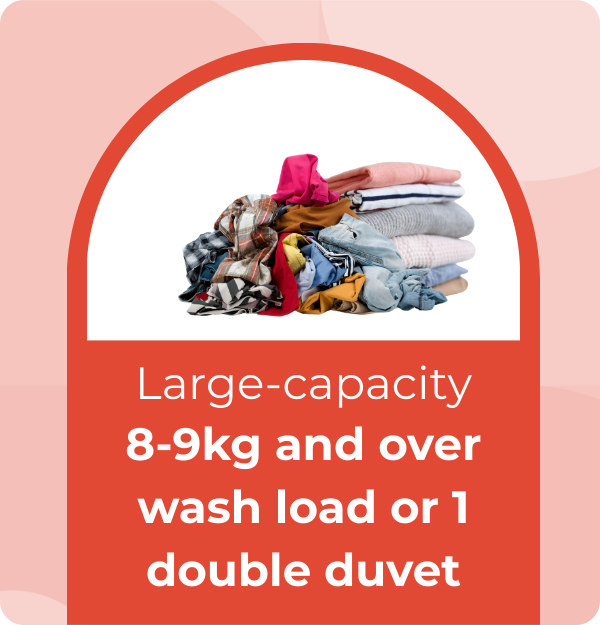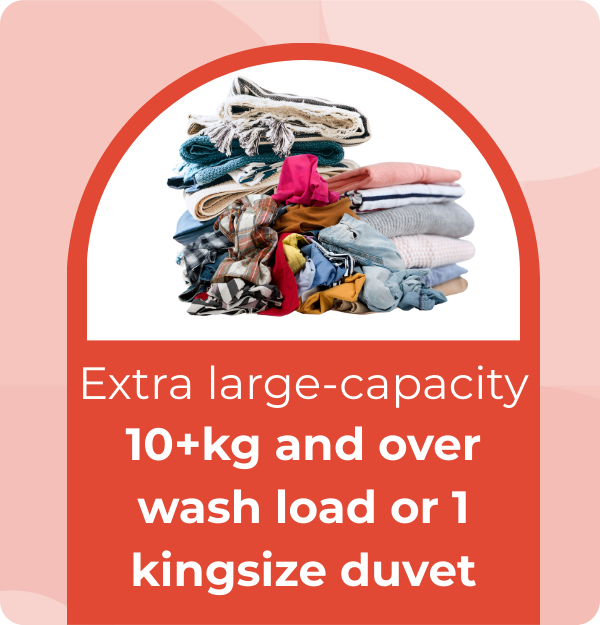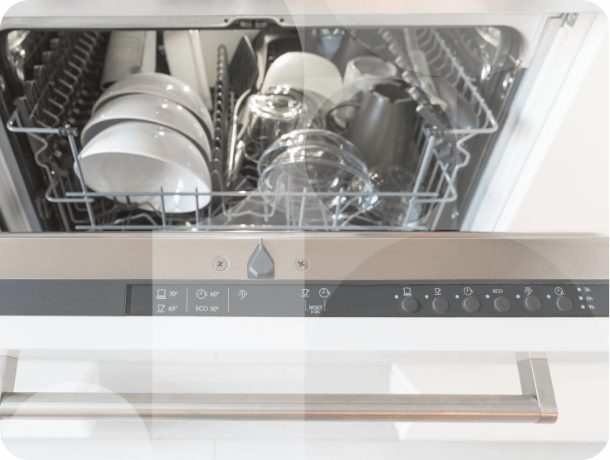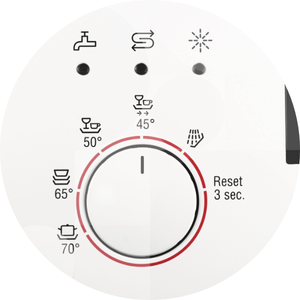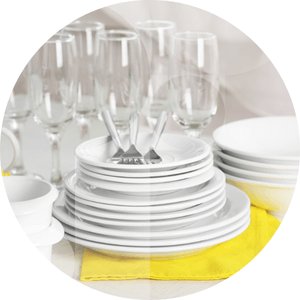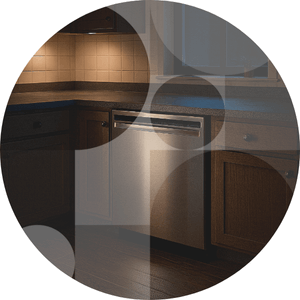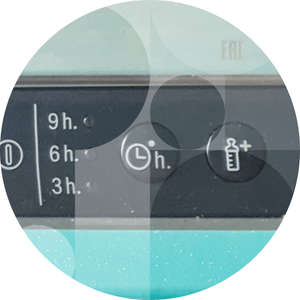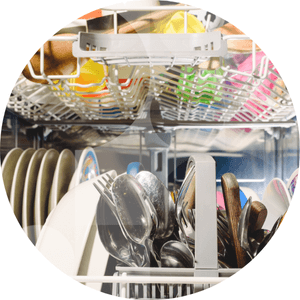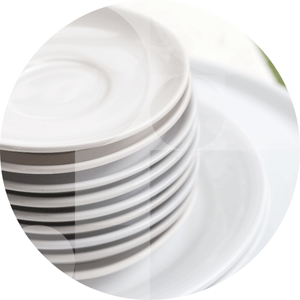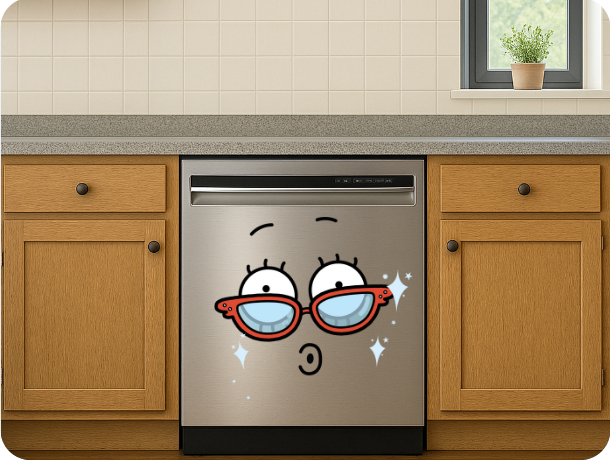Dishwasher buying guide
Hughes’ essential guide to choosing a dishwasher that fits your home, lifestyle, and budget.

Don't forget the door drop!
Don’t forget that you need to leave enough space for your dishwasher door to fully open and close.
Drawers, other cupboards and appliances may obstruct the opening or make your appliance unusable if its installation is poorly planned. So, keep this in mind when you’re choosing and measuring for your new dishwasher.
What does a place setting contain?
There’s no official definition of a place setting, but as a rough guide, a place setting would be a dinner plate, a dessert plate, a glass, a bowl, a cup, saucer and cutlery.
Water consumption
Compared to washing up by hand, dishwashers typically use less water. However, the amount of water an appliance uses per cycle changes from one model to the next. If you’re worried about your environmental impact or the cost of your water bills, then you should check how many litres a machine is using per wash cycle. Some models may use only 9 L per cycle, while most will run at about 12 L per wash.
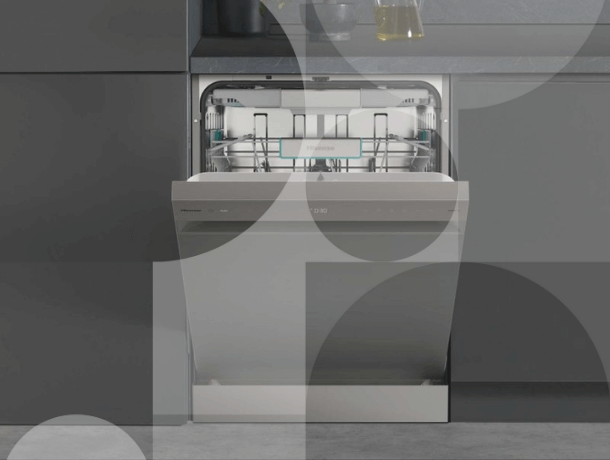
Smart dishwasher
Just got to work and realised you forgot to put the dishwasher on? With a smart dishwasher, no problem. These machines connect to your home Wi-Fi, allow you to run cycles from your mobile and check on its progress.
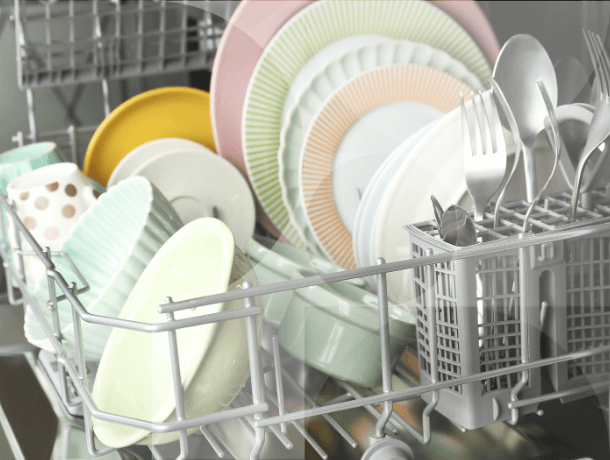
Sensor controlled washing
Unsure on what setting you should be using? Dishwashers with sensor-controlled washing can detect how dirty your dishes are and automatically adjust the programme and amount of water used to get your dishes squeaky clean.
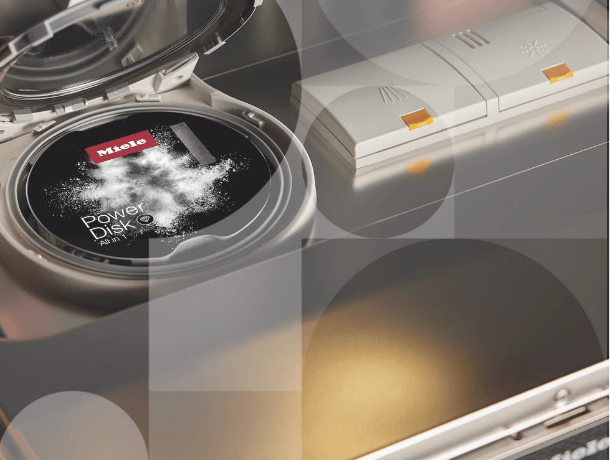
Auto-dosing
Make washing your dishes even simpler by letting your machine choose how much detergent to use. With technology like Miele AutoDos, you simply insert a detergent disk, and the machine intelligently works out how much it needs to use, saving you money by not using more than you need to. Hisense’s Auto Dose feature can even store enough detergent for up to 20 washes.
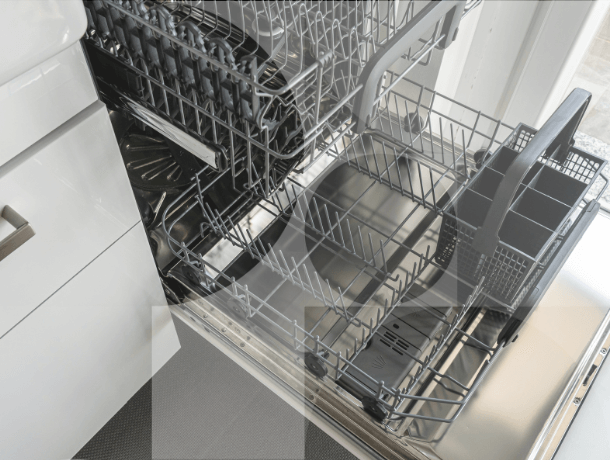
Machine cleaning
Your dishes will always clean better in a clean machine. Some machines will come with a built-in cleaning cycle so you can make sure your dishes are always coming out crystal clean.
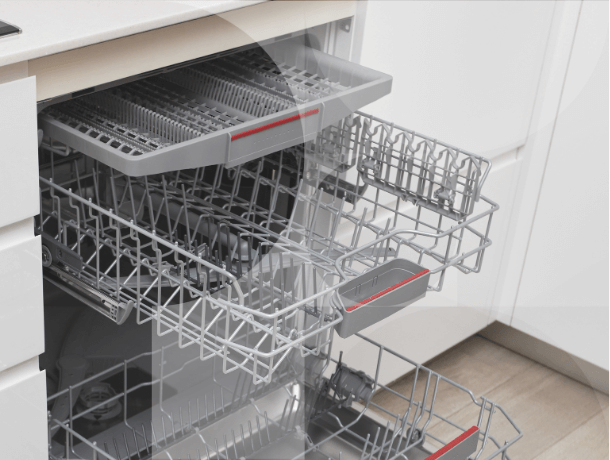
Cutlery trays
You may have noticed that the cutlery basket takes up a lot of space on the bottom rack of a dishwasher. Many dishwashers will have an additional tray at the top, specifically for your cutlery, meaning you can maximise your space and avoid any injuries from misplaced knives and forks!
What size dishwasher do I need for my kitchen?
How much should I spend on a dishwasher in the UK?
What's the difference between integrated and freestanding dishwashers?
How energy efficient are modern dishwashers?
Do I need to use dishwasher salt and rinse aid?
How quiet should a dishwasher be?
What wash programmes do I actually need?
How long do dishwashers typically last?






